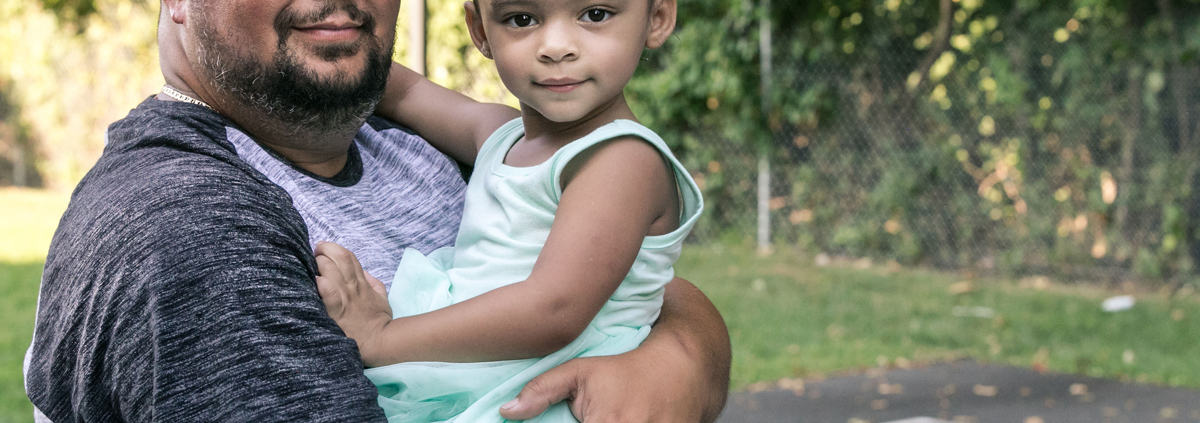Measure Success of Child Welfare Programs With Hard Data
On December 21, The Chronicle of Social Change published a joint op/ed by New York Foundling President & CEO Bill Baccaglini and SVP of Evidence-Based Programs Sylvia Rowlands about the imperative for child welfare service providers to implement proven evidence-based treatments and interventions to improve the lives of the children and families they serve. To read the piece in full, please see Doing What Works: Measure Success of Child Welfare Programs With Hard Data below.
Child welfare professionals strive every day to keep children safe, to keep families healthy and together and break multi-generational cycles of maltreatment. More than 3 million new cases of child abuse and neglect are reported every year in the United States and more than 400,000 children are in foster care at any given time. The financial cost to our society is enormous.
We now have a moral imperative to recognize decades of hard data, from multiple studies covering hundreds of thousands of children and families, showing compelling evidence that a different approach can improve outcomes. Evidence-based treatments and interventions have been documented, studied, subjected to clinical trials and reported on for decades. This research demonstrates clearly, with hard data, that evidence-based practices in child welfare interventions are more effective than traditional treatment methods. Child welfare service providers can now save more lives than ever before with the rigorous and diligent application of these strategies.
But change – even when it represents assured improvements – is often met with resistance. When Joseph Lister began promoting the idea of sterile surgery and the use of antiseptics 150 years ago, many in the medical profession stubbornly refused to acknowledge the effectiveness of this new concept. They acted offended at the suggestion that the surgical techniques and approach to patient care they’d used throughout their careers could be improved upon.
Well established clearinghouses have developed a clear definition for what constitutes “evidence-based.” We need to respect and follow that definition. Programs must be validated through multiple well-designed, rigorous scientific evaluations and produce data that show systematic and sustained improvement. Importantly, the results, procedures and protocols must be transparent and the program and its outcomes must be replicable.
As a result, shifting to an evidence-based model requires planning, training, staff support, oversight and, in some cases, a significant cultural change within the organization. So perhaps the resistance should come as no surprise, even if it is unsupported by years of research and data.
Some child welfare professionals believe that these practices will not translate to their unique populations, or that social work practices cannot be broken down into metrics, measured, and replicated with rigid adherence. We hear a continual refrain of: “My kids are different,” “my community is different,” “my situation is different,” “families are not all the same” and “we are not robots.” We hear this without ever seeing data explaining why evidence-based practices would be any less applicable to their families than they have been with over 300,000 others.
Still others, regrettably, are bound by inertia. They have always done things a certain way. They have anecdotes describing the many lives saved and families strengthened over their careers. Some hear recommendations for change as criticism of their past practices. The idea that they could achieve better outcomes if they worked differently is uncomfortable.
We have had the opportunity to review results from a study of 3,825 families who received services in the form of an evidence-based practice known as Family Functional Therapy/Integrated Clinical Case Management (FFTICCM). Compared to usual care, these families completed treatment faster and required fewer contacts with case workers, therapists and other staff. These families were 72 percent more likely to meet all of their established treatment goals and, in high risk families, 72 percent less likely to have a case closed with an out-of-home placement.
Despite the fact that the families referred to these programs had higher rates of prior abuse allegations, domestic violence and substance use, the results were impressive, with 49 percent fewer families experiencing negative outcomes (transfers, out-of-home placements, higher service needed) and 50 percent fewer families still in service after a year. Perhaps most impressive, these families were 82 percent less likely to have repeat maltreatment allegations three years post-treatment.
It is heartening to see the federal government, in the recently enacted Family First Prevention Services Act legislation, underscore the importance of evidence-based practices by requiring their use. Ultimately, though, the effectiveness of any legislation or governmental requirements will depend on how evidence-based practices are defined – whether they require programs to be truly evidence-based or allow looser definitions that encompass a wide array of other programs.
That particular debate – over what constitutes “evidence-based” – has picked up steam in recent years and has been troubling. Some organizations might seek to alter proven evidence-based programs. Others wish to consider evidence-based practices as a guide and adapt them to account for community, cultural or other population differences. But whatever programs are adopted, to be truly evidence-based, they must include a rigorous clinical evaluation process, time frames and complete and transparent reporting of results – so they can be reviewed by government agencies and peer organizations. Those are the kinds of requirements to which we all need to adhere.
Years of studies clearly show the effectiveness of these practices in achieving goals through a range of complex and multifaceted situations. Simply put, they can help us save children and keep families together.
Public funders and foundations alike increasingly want to see evidence of successful outcomes in programs they support. While this is not the central reason to adopt them – our mission is the central reason – for those of us who are always cognizant of the gap between funding and the services we provide, it is a tangential, but important added benefit of these programs.
Evidence-based programs are one of the most important developments in the practice of child welfare in decades. They will help all of us more predictably achieve our primary objective: the safety and well-being of children and the preservation of their families.

